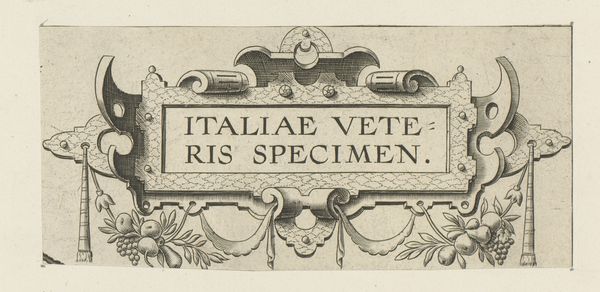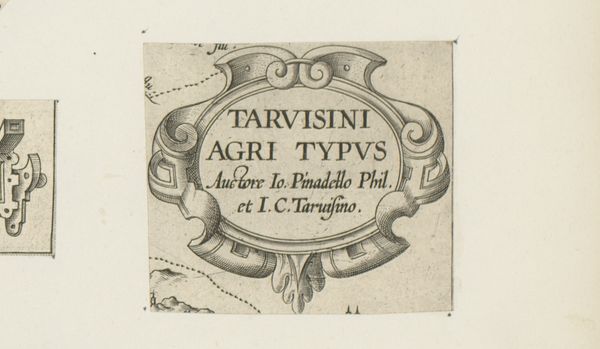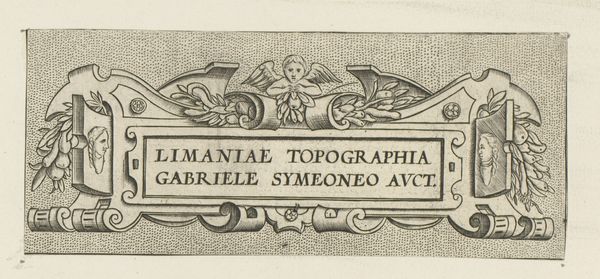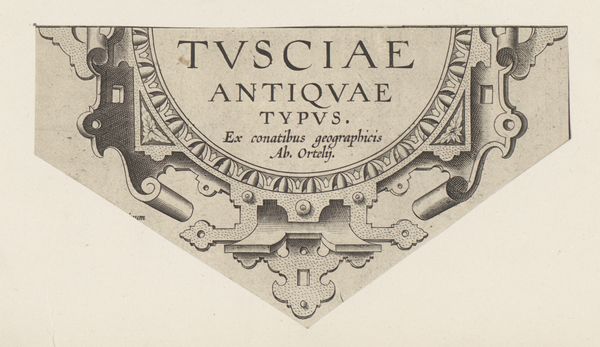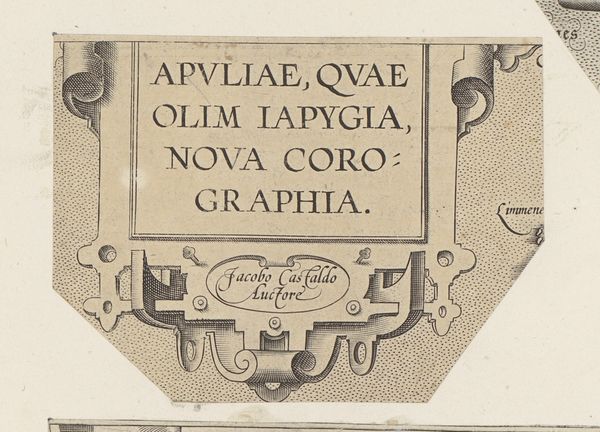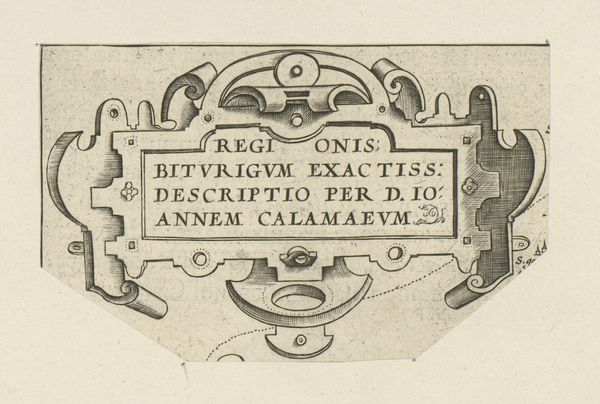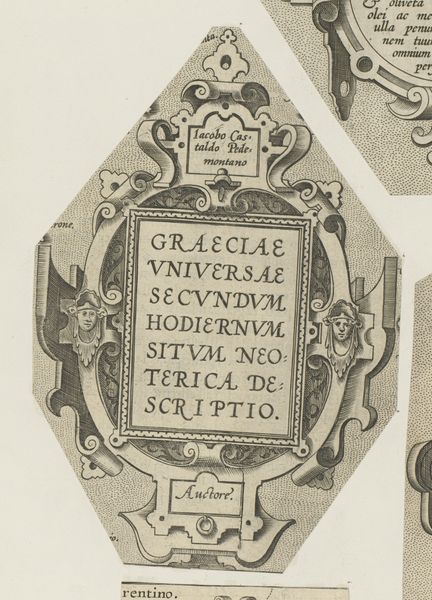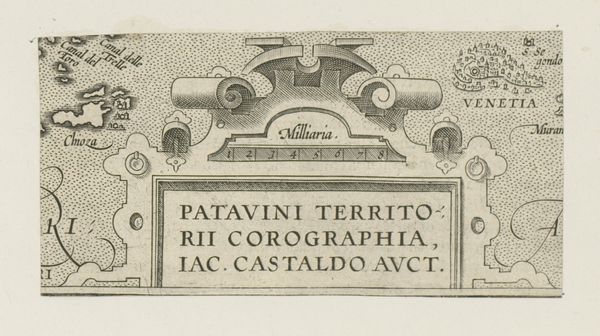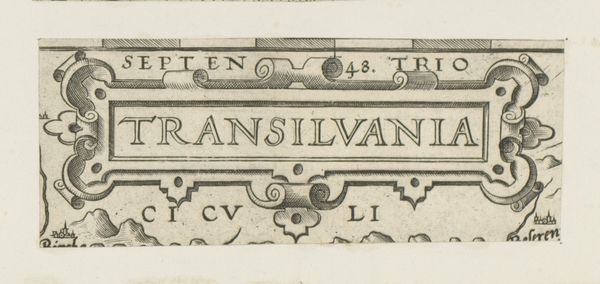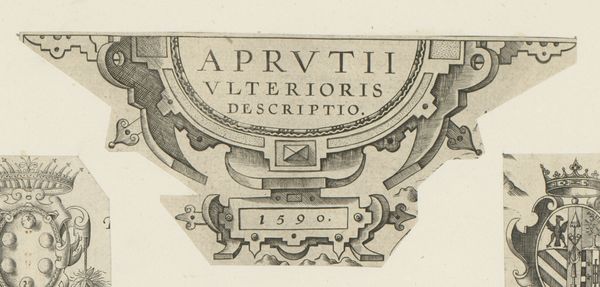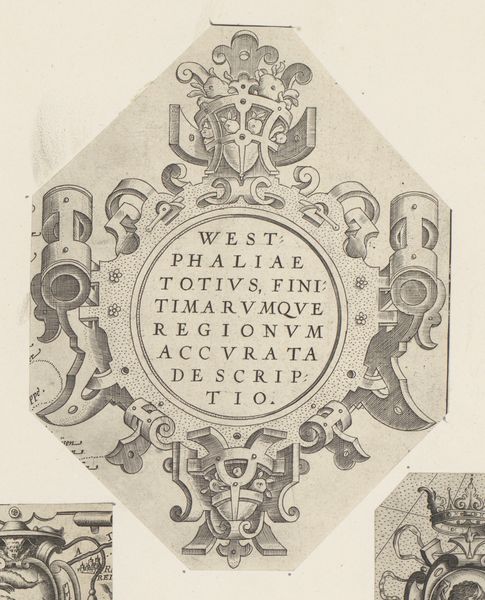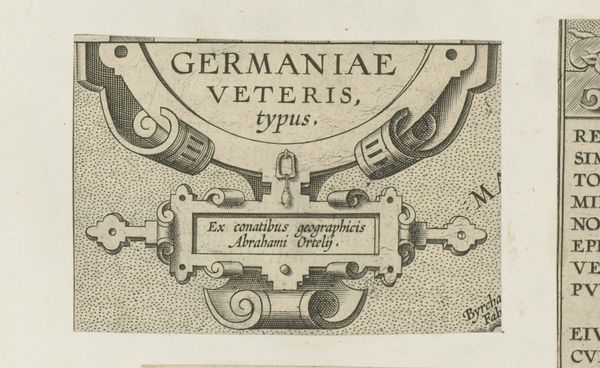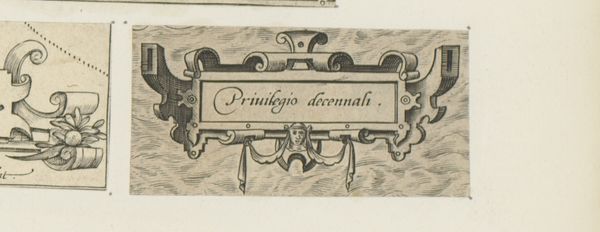
graphic-art, print, engraving
#
graphic-art
# print
#
11_renaissance
#
geometric
#
engraving
Dimensions: height 115 mm, width 240 mm
Copyright: Rijks Museum: Open Domain
This elongated cartouche with sundial was made by an anonymous artist. The image combines a functional object with decorative elements, reflecting broader cultural values during the Renaissance. Cartouches like these were used for maps. The sundial, a scientific instrument, would have symbolized knowledge and progress, reflecting the Humanist interest in classical learning. The image also contains decorative ornamentation, reflecting the patronage of wealthy elites and learned institutions. The cartouche combines practicality with symbolic meaning. Although we don't know the exact date this image was made, maps like this were associated with Italian city states, such as Venice and Florence. They provided essential information for trade, navigation, and military strategy. Studying surviving maps and archives from the period helps art historians to investigate the function of these objects and their cultural and historical significance.
Comments
No comments
Be the first to comment and join the conversation on the ultimate creative platform.
